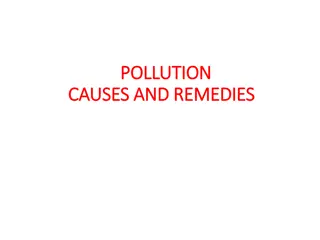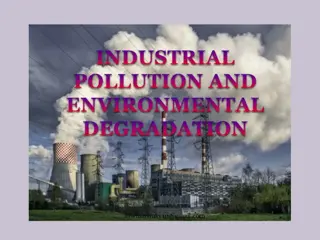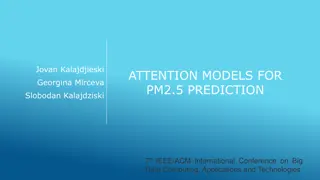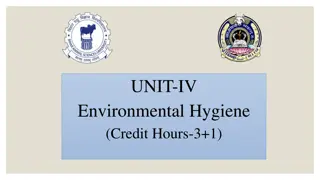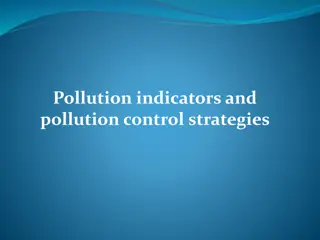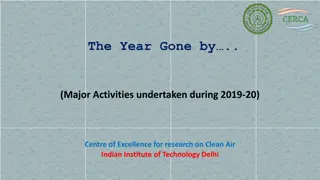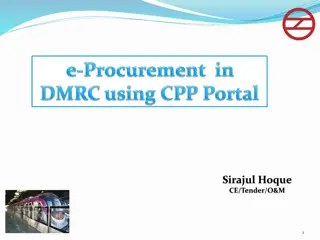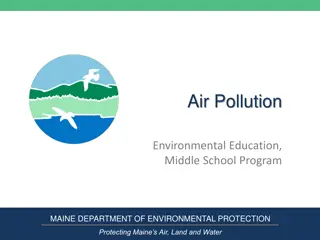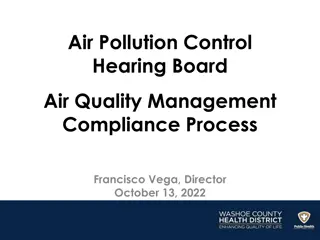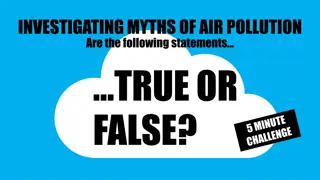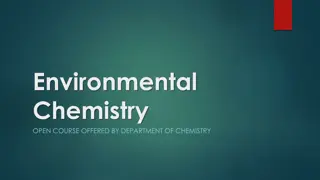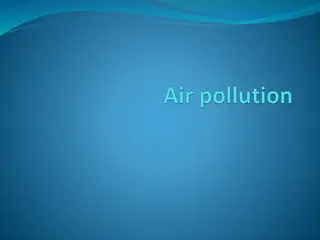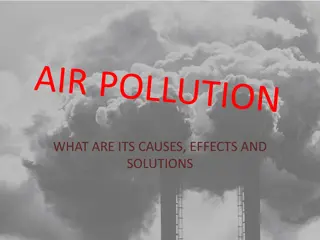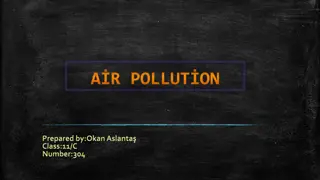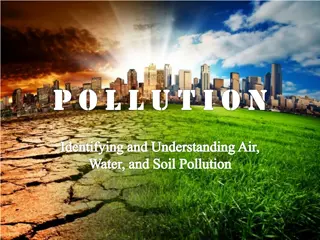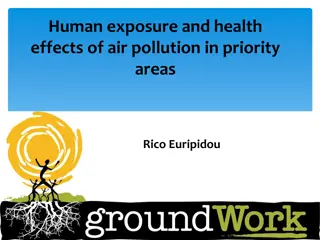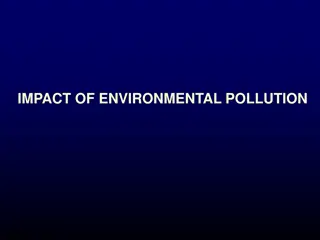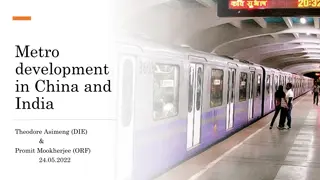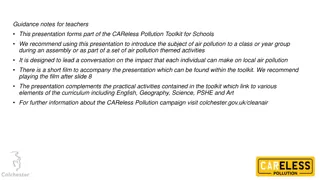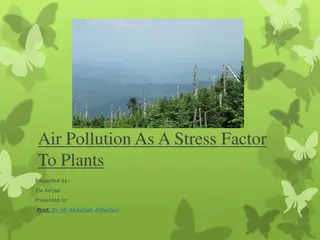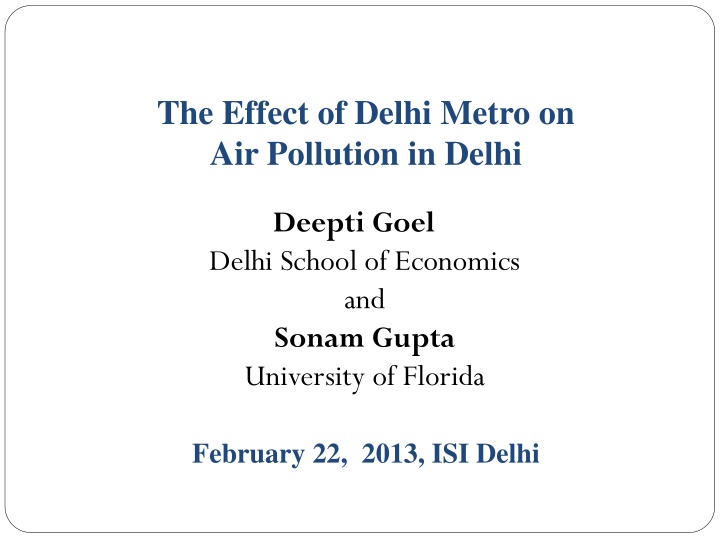
Analyzing the Impact of Delhi Metro on Air Quality in Delhi
Explore the first econometric study on how Delhi Metro has influenced air quality in the city. Discover the differences in pollutants like NO2, SO2, CO, and O3 before and after the Delhi Metro implementation, shedding light on its environmental consequences.
Download Presentation

Please find below an Image/Link to download the presentation.
The content on the website is provided AS IS for your information and personal use only. It may not be sold, licensed, or shared on other websites without obtaining consent from the author. If you encounter any issues during the download, it is possible that the publisher has removed the file from their server.
You are allowed to download the files provided on this website for personal or commercial use, subject to the condition that they are used lawfully. All files are the property of their respective owners.
The content on the website is provided AS IS for your information and personal use only. It may not be sold, licensed, or shared on other websites without obtaining consent from the author.
E N D
Presentation Transcript
The Effect of Delhi Metro on Air Pollution in Delhi Deepti Goel Delhi School of Economics and Sonam Gupta University of Florida February 22, 2013, ISI Delhi
Research Question Has the Delhi Metro (DM) resulted in an improvement in air quality in the city?
Motivation Adverse health effects of air pollution Block et al. (2012); Damage to central nervous system, cardiovascular disease, asthma Currie & Walker (2011); Moretti and Neidell (2011); High levels of pollution in Delhi Several criteria pollutants exceed national standards Net effect of public transport ambiguous Traffic Diversion Effect Traffic Creation Effect Power Plants (in case of Delhi Metro (DM))
NO2 Daily Average g/m- ITO on Tuesdays in 2006 400 300 avg_tues_no2ito 200 100 0 12sep2006 07nov2006 05dec2006 28feb2006 28mar2006 25apr2006 23may2006 18jul2006 03jan2006 31jan2006 20jun2006 15aug2006 10oct2006 02jan2007 date
SO2 Daily Average g/m- ITO on Tuesdays in 2006 100 80 avg_tues_so2ito 60 40 20 12sep2006 07nov2006 05dec2006 28feb2006 28mar2006 25apr2006 23may2006 18jul2006 03jan2006 31jan2006 20jun2006 15aug2006 10oct2006 02jan2007 date
CO 8hr Average g/m- ITO on Tuesdays in 2006 (Mornings and Nights) 10000 8000 avg_tues_coito 6000 4000 2000 0 12sep2006 07nov2006 05dec2006 28feb2006 28mar2006 25apr2006 23may2006 18jul2006 03jan2006 31jan2006 20jun2006 15aug2006 10oct2006 02jan2007 date morning night
O3 8hr Average g/m- ITO on Tuesdays in 2006 (Mornings and Nights) 10000 8000 6000 4000 2000 0 12sep2006 07nov2006 05dec2006 28feb2006 28mar2006 25apr2006 23may2006 18jul2006 03jan2006 31jan2006 20jun2006 15aug2006 10oct2006 02jan2007 date morning night
Main Contributions First study to econometrically analyze the effect of the Delhi Metro (DM) on air quality in Delhi We identify the effect of several extensions of the DM rail network We determine the cumulative effect of DM over a fifteen month period
Summary of Main Results DM led to statistically significant decline in two main vehicular pollutants, nitrogen dioxide and carbon monoxide Suggestive of a traffic diversion effect
Rest of the Presentation Identification Strategy Graphical Presentation of Identification Estimation Results Robustness Checks Conclusions
Identification Strategy OLS suffers from upward bias Regression Discontinuity Design Outcome variable: Hourly air pollutant measure Treatment: Operation of Delhi Metro Assignment Variable: Time Main Identifying Assumption In the absence of the metro rail extension, conditional on weather, we would observe a smooth time trend for the pollutant measure (Chen and Whalley, 2012)
Econometric Framework Y1 Y0 Suppose is pollution in the absence of metro, is pollution in the presence of metro. + = t t Y Y 0 1 This leads to the regression, DM t P Y + = ) ( ' where T t DM t = , 0 is when metro was extended T t t = ( ) ' ( ) E Y P t 0 t Y Y 1 0 = t t + t t t = , 1 DM t T t
(Rough) Graphical Presentation of Identification Strategy
Monthwise Average Daily Metro Ridership, 2004-2006 year_month 2004m3 2004m12 2005m7 2005m12 2006m4 2006m11 500000 average daily ridership 400000 300000 200000 100000 2004m10 2005m10 2006m10 2004m1 2004m4 2004m7 2005m1 2005m4 2005m7 2006m1 2006m4 2006m7 2007m1 2007m4 year_month
Monthwise Percentage Change in Average Daily Metro Ridership, 2004-2006 year_month 2004m3 2004m12 2005m7 2005m12 2006m4 2006m11 80 %change in average daily ridership 60 40 20 0 -20 2004m10 2005m10 2006m10 2004m1 2004m4 2004m7 2005m1 2005m4 2005m7 2006m1 2006m4 2006m7 2007m1 2007m4 year_month
NO2 at ITO, Blue Line Second Extension 5.5 5 4.5 4 08oct2006 29oct2006 19nov2006 10dec2006 date Fitted values lno2ito_dailyavg
CO at ITO, Blue Line Second Extension 8.5 8 7.5 7 08oct2006 29oct2006 19nov2006 10dec2006 date Fitted values lcoito_dailyavg
Estimation Data and Regression Results
Data and Study Period CPCB: Hourly Pollution Data from three different Monitoring Stations in Delhi (ITO, Sirifort, DCE) Four criterion pollutants: NO2, SO2, CO and O3 IMD: Hourly weather data for Delhi Temperature, Relative humidity, Rainfall and Wind speed DMRC: Monthly Ridership Data Overlapping data on pollution and weather only available for 2004-2006 Pollution data also suffers from missing observations
Phase Wise Extension of the Delhi Metro Extensions of the metro network 2004-2006 Red Line Extension 2 March 31, 2004 Yellow Line Introduction December 20, 2004 Yellow Line Extension 1 July 3, 2005 Blue Line Introduction December 31, 2005 Blue Line Extension 1 April 1, 2006 Blue Line Extension 2 November 11, 2006
Estimation Equation Estimate for each extension of DM: DM x ' Y = + + + ' P(t) + u t t t t t Y DM P(t) Third order polynomial in time Observed Pollutant measure in logs 1 for time periods after extension and 0 otherwise t tx Quartic in current and 1 hour lags of humidity, rainfall, temperature, and wind speed ; hour of the day; weekday; and their interactions
Estimation Equation We also estimate an equation with contiguous extensions included to measure cumulative effect (for CO at ITO between Nov 2004 to Jan 2006) Y = + x + ' P(t) + D + i Mi t 0 1 t 2 t t
Missing Pollution Data Focus on only those extensions that have at least four weeks of data on each side of the extension, with no more than 20 percent of observations missing
Discontinuities Studied at ITO, 2004-2006 Permissible window length in weeks NO2 Yellow Line Introduction Yellow Line Extension Blue Line Introduction Blue Line Extension 2 CO SO2 O3 9 9 19 41 37 13 13 13 13 9
Nine week window results: ITO NO2 CO SO2 O3 Yellow Introd; Dec 2004 std. error; obs Yellow Ext; Jul 2005 std. error; obs Blue Introd; Dec 2005 std. error; obs Blue Ext. 2; Nov 2006 std. error; obs Robust std. errors reported 17.6 36.1*** 11.7; 1579 10.5; 1555 -68.6*** 90.682*** 6.4; 1466 3.8; 1506 17.4; 1478 -29.3*** 4.9; 1639 -23.6*** -26.4*** 3.7; 1605 4.7; 1605 -6.9 -60.1*** 3.5; 1608 14.5** 6.0; 1566
Nine week window results: Siri Fort NO2 CO SO2 O3 Yellow Introd; Dec 2004 -39.9*** std. dev; obs Yellow Ext; Jul 2005 std. dev; obs Blue Introd; Dec 2005 std. dev; obs Blue Ext. 2; Nov 2006 std. dev; obs -89.2*** 1.6; 1571 12.1; 1572 27.5** 2.7; 1555 -37.3*** -22.0*** -34.6*** 3.5; 1601 6.3; 1532 5.2; 1557 Robust std. errors reported
Cumulative Effect for the period Nov 2004 to Jan 2006: CO at ITO CO Yellow Introd; Dec 2004 std. error Yellow Ext; Jul 2005 std. error Blue Introd; Dec 2005 std. error observations Robust std. errors reported -15.4** 6.6 -33.3*** 3.3 -31.9*** 6 9914
RD Design Validity Other Discontinuities Shorter Window Artificial Discontinuities Test Appropriate Polynomial Order Non parametric or Local Linear Regression
RD Design Validity: Robustness Checks Other Discontinuities Construction activity undertaken to build DM Regulation that might cause discontinuous change Manipulation of choice of extension date
Five week window results: ITO NO2 CO SO2 2.2 O3 Yellow Introd; Dec 2004 std. error; obs Yellow Ext; Jul 2005 std. error; obs Blue Introd; Dec 2005 std. error; obs Blue Ext. 2; Nov 2006 std. error; obs 90.9*** 20.5; 861 15.4; 865 89.6*** 24.4; 759 -17.5** -77.6*** 8.1; 757 -52.8*** 3.8; 848 -20.3*** -24.0*** 3.8; 935 3.8; 848 31.7*** 11.1; 835 5.7 5.1; 930 5.0; 935 Robust std. errors reported
Five week window results: Siri Fort NO2 CO SO2 O3 -8.5 Yellow Introd; Dec 2004 -29.4*** std. dev; obs Yellow Ext; Jul 2005 std. dev; obs Blue Introd; Dec 2005 std. dev; obs Blue Ext. 2; Nov 2006 std. dev; obs -76.9*** 3.7; 854 12.4; 853 4.4; 842 -34.2*** -21.9*** -25.3*** 3.4; 934 6.5; 871 5.2; 901 Robust std. errors reported
Main Results Nitrogen Dioxide Decrease for both stations across all extensions For ITO, 24 and 29 percent across extensions For Siri Fort, 37 and 40 percent across extensions Carbon Monoxide Decrease for both stations across all extensions For ITO, 26 and 69 percent across extensions For ITO cumulative effect of 15, then 33 and then 32 percent for three consecutive extensions between Nov 2004 and Jan 2006 For Siri Fort, 22 percent
Main Results Sulphur Dioxide For ITO, increase (90 percent) For Siri Fort, decrease (35 to 89 percent across extensions) Ozone For ITO, sign flips across extensions for 9 week window (increase across extensions for 5 week window) For Siri Fort, increase for 9 week window (insignificant for 5 week window)
Work Ahead Artificial discontinuities Test Smoothness tests for residuals after controlling for weather Different orders of time polynomial (AIC criteria) Non parametric Estimation with optimal bandwidth Better Understand SO2 and O3 results Obtain additional data Vehicular registrations to support traffic diversion effect Power generation by coal based power plants within Delhi

